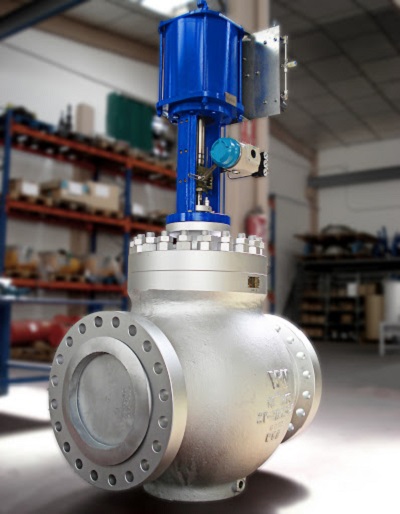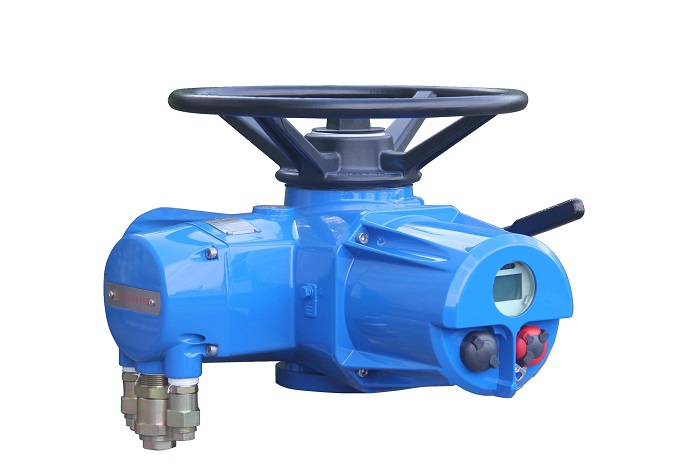The advent of technology has made our life easier and one of those technologies is Control Vales that eliminate some of the daunting manual tasks while increasing the speed of the process. In this article from Linquip, you’ll read all there is to know about Control Valves and how they work. Plus, you’ll learn why using the right control valves reduce the costs as well as increasing the safety of the control process!
⇒ View a List of Control Valves for Sale and Their Suppliers ⇐
What are Control Valves?
Control Valves have been designed to control and regulate pressure and flow rate. They can automatically do the job and eliminate the need for you to constantly keep an eye on the system. You can choose the correct control valve for the specific desired pressure. It’s interesting to know that Control Valves are also known as the final control element in automatic control terminology which is due to the process control valves operating within their system.
What is a pressure control valve?
The valve basically controls the fluid flow. Control valves operate by varying the size of the flow passage. Control valves can directly control the flow rate and the quantities like temperature, pressure, and liquid level. Pressure control valve is responsible for keeping the system pressures in the right range toward the desired limit. They can help maintain the set pressure safely in the system they are operating in. You can find them in almost all hydraulic systems these days.
Pressure control valves have different types such as unloading, relief, sequence, reducing, and counterbalance. In order to achieve the required pressure control with the help of these pressure control valves, a restriction is needed. And almost all of these types are usually closed valves and only the reducing type is usually open.
Read More on Linquip
- What is Actuator Valve
- What is Air release valve
- What is Angle Valve
- What is Ball Valve
- What is Bleeder Valve
- Working Principle of Control Valve
- Top Control Valve Suppliers in the USA
Control Valves Principles of Operation
Now let’s dig deeper into how control valves operate and what to expect when working with one.
Control valves try to keep the variables of a flowing fluid, like chemical compounds, steam, gas, and water close to the desired set point by manipulating the flowing fluid. The control signal here which could be either electronic or pneumatic, manipulates the CV and changes its location, resulting in the accurate control of the flowing fluid and reaching the profitable production requirements. It also helps saving money by reducing unnecessary costs.
Hydraulic, electrical, or pneumatic actuators are responsible for opening or closing automatic control valves and the valve positioners with the help of a modulating valve that can adjust the desired degree of opening of the valve. These modulating valves can be set to different positions from fully open to fully closed based on the desired outcome.
The only thing required for air-actuated valves (pneumatics control valve) is a compressed air supply, making it the most commonly used type due to its simplicity, whereas other valves such as electrically operated valves need additional switchgear and cabling. Hydraulically-actuated valves also need a high-pressure supply as well as return lines for the hydraulic fluid.
Air-actuated (pneumatic) control signals are normally operating on a pressure range of 3-15psi (0.2 – 1.0 bar). For industry, an electrical signal of 4-20mA, as well as 0-10V for HVAC system, is required.
State-of-the-art electrical control these days uses smart communication signal for 4 to 20mA control current. It can signal back the health of the valve and verify its position to the controller.
Read More on Linquip
- List of Valve Suppliers and Companies
- Control Valve Suppliers and Companies
- Ball Valve Suppliers and Companies
- Butterfly Valve Suppliers and Companies
- Check Valve Suppliers and Companies
- Flanged Control Valve V150 for Sale
- Fisher EZ Control Valve EZ for Sale
- Control Valve ET for Sale
Main Parts Of CV
There are three main control valve parts in automatic control valves: Actuator, Positioner, and Valve Body.
- Valve Actuator: This part is responsible for moving the valve’s modulating element.
- Valve Body: Contains the modulating element such as butterfly or globe.
- Valve Positioner: This unit is responsible for checking the position of the valve and making sure that its opening degree is the same as the desired number.
See All Diaphragm Valve for Sale
General Types of CV
Control valves have different types but some of them are more popular than the rest. We’ll briefly cover the most popular ones.
How CVs are classified is according to different features such as pressure drop profile, movement profile of the controlling element, actuating medium and functionality.
When classifying control valves based on the pressure drop profile, there would be two common types including High-Recovery valve and Low-Recovery valve. Butterfly Valve, Plug Valve, Gate Valve, and Ball Valve are all considered as high-recovery valve type. Low-Recovery valve type includes Angle Valve and Globe Valve.
Control valves categorization based on functionality includes: Check Valve (e.g.: Turbine bypass valve), Shut-off and On-Off Valve (e.g.: Gate Valve, Pinch Valve), and Spring-Loaded Safety Valve.
When choosing control valves based on the movement profile of the controlling element, you have two options: Sliding Stem, and Rotary Valve. These two popular control valve types are separated based on their movement. In the Sliding stem, the valve moves in a straight-line motion, whereas in the Rotary Valve, the valve disc has a rotary motion. Examples on the first one is: Globe Valve, Wedge type gate valve, Angle Valve, etc. and examples of the Rotary valve includes: Ball Valve, and the Butterfly Valve.
Last but not least is separating control valves based on the actuating medium. This feature includes different types such as Manual Valve, Pneumatic Valve, and Hydraulic Valve.
Read More on Linquip
- Industrial Valves A Comprehensive Review on Parts, Types and its Usability
- Control valve positioner: an easy-to-understand guide to know them better
- Flow control valve types and functions
- Control Valve Types 101: Different classifications, advantage, and disadvantages
- Control Valve Parts: The Go-To Guide for beginners and experts
- Facts About The Flow Control Valve Function
Advantages of using Control Valves
High performance as well as easy maintenance are only a few of the great features a high-quality control valve has to offer. Durability and being able to withstand diverse conditions are among the other benefits you can expect from such units. You can use control valves in different industries such as gas, power, steel, petrochemicals, etc.
Control valves not only save you money by eliminating unnecessary costs, but also help minimize the process as well as product variability. It also brings safety to each and every process of the related units based on the defined standards.
Now that you know all the necessary information about control valves, you can read more about their parts and different types by checking other related articles on Linquip website. And if you have any questions, feel free to sign up in our website and one of our experts will solve all your problems.
Read More on Linquip
- Control Valve Manufacturers in United States
- Angle Valve Manufacturers
- Solenoid Valve Manufacturers
- Air release valve Manufacturers
- Butterfly Valve Manufacturers
Buy Equipment or Ask for a Service
By using Linquip RFQ Service, you can expect to receive quotations from various suppliers across multiple industries and regions.
Click Here to Request a Quotation From Suppliers and Service Providers





